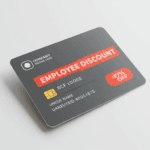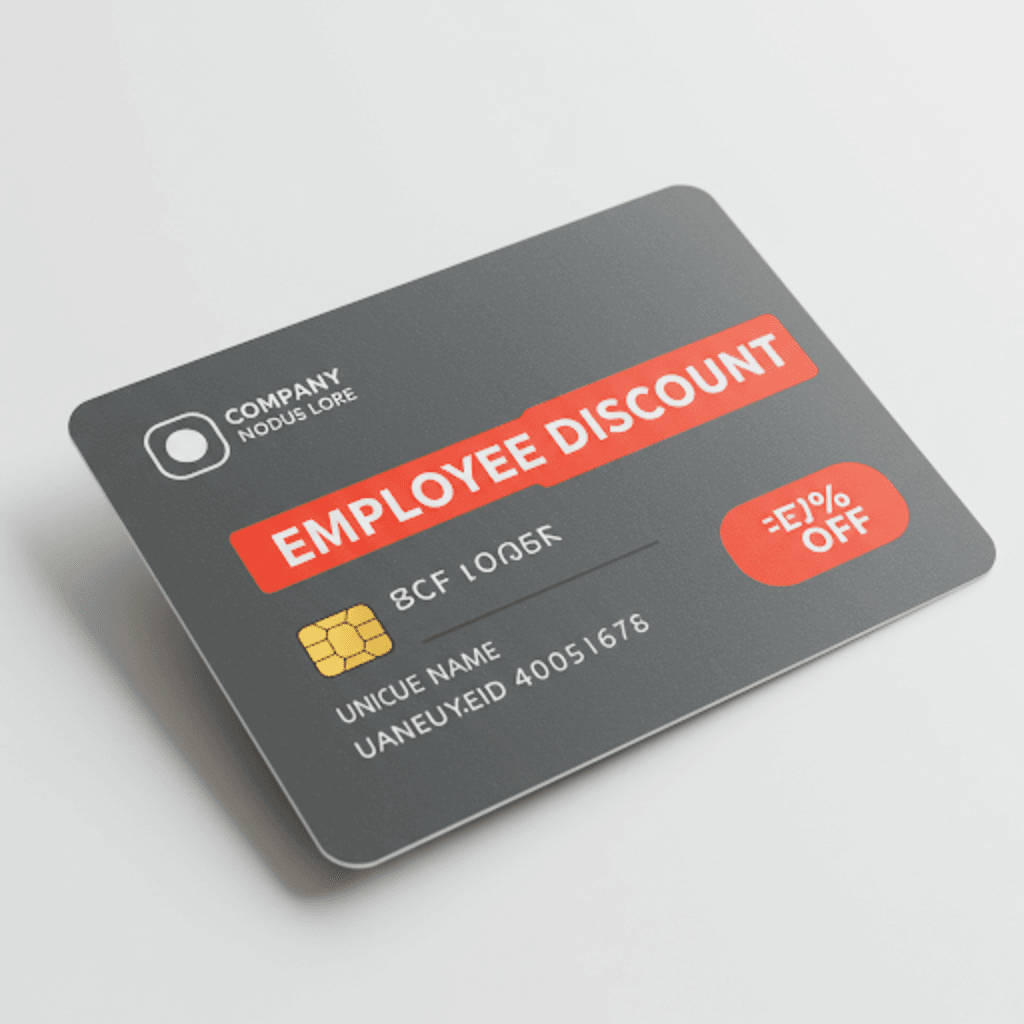
Employee discounts: A comprehensive guide
Employee discounts are a popular perk offered by many companies, providing employees with reduced prices on goods and services. These discounts can range from small percentage savings to substantial price reductions, and they can apply to a wide variety of products and services, from everyday essentials to luxury items. This comprehensive guide explores the ins and outs of employee discounts, covering their benefits, types, common practices, and tips for maximizing their value.
The benefits of employee discounts
Employee discounts offer a win-win situation for both employers and employees. For employees, the advantages are obvious:
- Increased purchasing power: Discounts allow employees to stretch their budgets further, making goods and services more affordable. This can be particularly beneficial for lower-wage earners or those with significant financial obligations.
- Improved financial well-being: By saving money on purchases, employees can improve their overall financial health, reducing debt, increasing savings, and achieving financial goals more easily.
- Enhanced employee satisfaction and morale: Employee discounts are a tangible demonstration of the company’s appreciation for its workforce, boosting morale and fostering a sense of loyalty.
- Access to products and services: Discounts can make it possible for employees to access products or services they might not otherwise be able to afford, improving their quality of life.
- Convenience: Many employee discount programs are easily accessible online or through company portals, making it convenient for employees to find and use the discounts.
For employers, offering employee discounts also provides several key benefits:
- Enhanced employee recruitment and retention: A robust employee discount program can be a powerful tool for attracting and retaining top talent, particularly in competitive industries.

- Increased employee engagement and productivity: When employees feel valued and appreciated, they are more likely to be engaged and productive in their work.
- Improved company reputation: Offering generous employee discounts can enhance the company’s image as a desirable employer, attracting positive publicity and strengthening its brand.
- Potential for increased sales: If the company offers discounts on its own products or services, employee discounts can drive sales and increase revenue.
- Tax advantages: In some cases, employee discounts may be tax-deductible for the employer, providing further financial benefits.
- Strengthened relationships with vendors: Negotiating employee discounts with vendors can build stronger business relationships and potentially lead to other favorable partnerships.
Types of employee discounts
Employee discounts come in various forms, each with its own characteristics and advantages:
- Company product/service discounts: This is one of the most common types of employee discounts, where employees receive reduced prices on the goods or services offered by their employer. The discount percentage can vary widely depending on the company and the product or service.
- Vendor discounts: Many companies partner with external vendors to offer discounts on a range of products and services, such as travel, entertainment, electronics, apparel, and more. These discounts are often negotiated through corporate partnerships or employee discount platforms.
- Local business discounts: Some companies, particularly smaller businesses, may partner with local businesses to offer discounts to their employees. This can include restaurants, shops, gyms, and other services in the surrounding area.
- Seasonal discounts: Certain discounts may be offered only during specific times of the year, such as holiday sales or back-to-school promotions.
- Group discounts: Some discounts may be available only to groups of employees, encouraging team building and camaraderie.
- Perk platforms: Several online platforms specialize in aggregating and providing employee discounts from a vast array of retailers and service providers. These platforms often offer a user-friendly interface and personalized recommendations.
- Cash back programs: Some companies utilize cards that offer cashback for purchases, giving a refund percantage.
Common employee discount practices
While the specific details of employee discount programs vary from company to company, there are some common practices that employers typically follow:
- Eligibility requirements: Most companies have eligibility requirements for employee discounts, such as a minimum length of employment or full-time status.
- Discount limits: Some programs may have limits on the amount of discounts an employee can use within a certain period or on specific products or services.
- Usage guidelines: Companies often provide clear guidelines on how to access and use employee discounts, including any restrictions or limitations.
- Communication channels: Employers typically communicate information about employee discounts through various channels, such as company newsletters, intranet portals, email updates, and employee handbooks.
- Regular program review: Many companies periodically review and update their employee discount programs to ensure they remain competitive and relevant to employee needs.
- Proof of employment: Employees may be required to provide proof of employment, such as a company ID badge or pay stub, to redeem certain discounts.
- Non-transferability: Most employee discounts are non-transferable, meaning they can only be used by the employee and not by family members or friends, although there may be exceptions.
Tips for maximizing employee discount value
To get the most out of employee discounts, employees can follow these tips:
- Familiarize yourself with the program: Take the time to thoroughly understand the details of your company’s employee discount program, including eligibility requirements, available discounts, and usage guidelines.
- Check regularly for updates: Employee discount programs are often updated with new offers and promotions, so check the program website or communication channels regularly.
- Plan purchases in advance: If you know you’ll need to make a significant purchase, check if there’s an employee discount available before you buy.
- Combine discounts with other offers: In some cases, you may be able to combine employee discounts with other sales, coupons, or promotions to maximize your savings.
- Use discount platforms: If your company uses an employee discount platform, take advantage of its features, such as personalized recommendations and search filters.
- Consider the total cost: Don’t be swayed solely by the discount percentage. Consider the total cost of the item or service, including any taxes, fees, or shipping charges.
- Read the fine print: Pay attention to any restrictions or limitations associated with the discount, such as expiration dates or excluded items.
- Don’t be afraid to ask: If you’re unsure about a particular discount or have any questions, don’t hesitate to contact your company’s HR department or the vendor offering the discount.
- Compare prices: Even with an employee discount, it’s always a good idea to compare prices with other retailers to ensure you’re getting the best deal.
- Spread the word: Let your colleagues know about valuable employee discounts you’ve discovered.
The future of employee discounts
Employee discounts are likely to continue evolving in the future, driven by technological advancements and changing employee expectations. Some potential trends include:
- Increased personalization: Employee discount programs may become more personalized, offering tailored recommendations based on individual employee preferences and purchase history.
- Greater use of mobile technology: Mobile apps and platforms will likely play a larger role in delivering and managing employee discounts, providing convenient access on the go.
- Integration with wellness programs: Employee discounts may be integrated with company wellness programs, offering discounts on healthy food, fitness memberships, and other wellness-related products and services.
- Expansion of discount categories: Employee discount programs may expand to include a wider range of categories, such as financial services, education, and home improvement.
- Focus on employee experience: Companies will likely prioritize the overall employee experience, making it easier and more enjoyable for employees to access and use discounts.
- Data-driven insights: Employers may use data analytics to track discount usage and identify areas for improvement, optimizing the program to better meet employee needs.
- Artificial intelligence (AI): AI-powered platforms could potentially automate the process of finding and recommending relevant discounts to employees.
Employee discounts are a valuable perk that benefits both employers and employees. By understanding the different types of discounts, common practices, and tips for maximizing their value, employees can take full advantage of this benefit and improve their financial well-being. As technology and employee expectations continue to evolve, employee discount programs are likely to become even more sophisticated and personalized, further enhancing their value and appeal.







